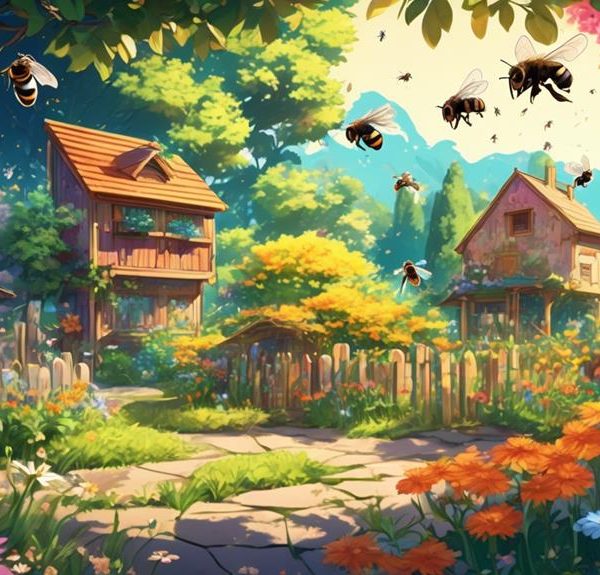Often overlooked, the depth of holes in a mason bee house plays a crucial role in their intricate world of pollination.
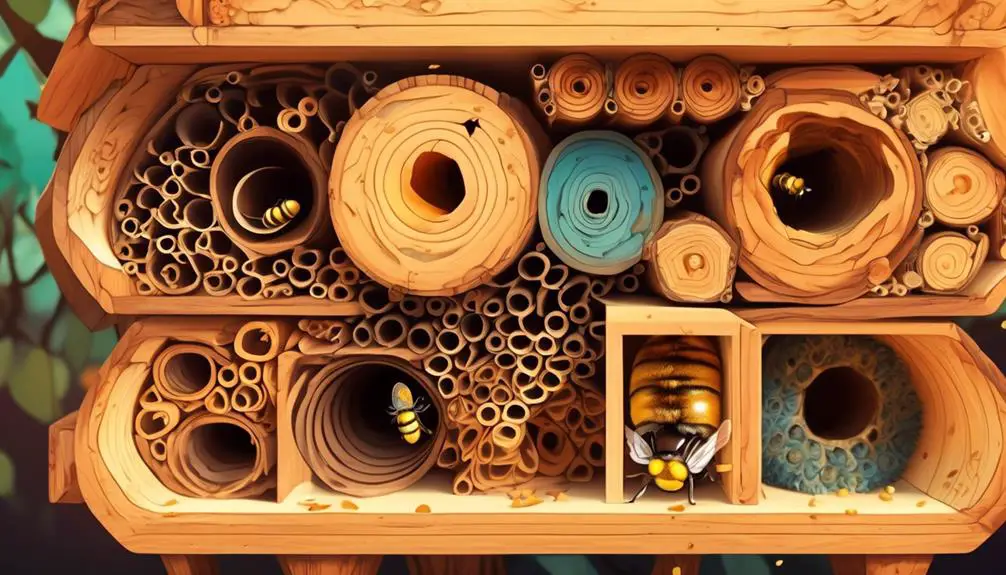
How Deep Are the Holes in a Mason Bee House?
Did you know that nearly 70% of bee species are solitary, with mason bees being among the most common? When setting up a house for these industrious pollinators, the depth of the holes is a crucial factor you'll need to consider.
But, you might be wondering, how deep should these holes be, and why does it matter? The answer to these questions might surprise you, revealing more about the fascinating world of mason bees and their unique housing needs.
Key Takeaways
- Mason bees are solitary bees that prefer nesting in pre-existing holes, with a depth of 4-8 inches.
- The depth of the holes in a bee house directly affects the sex ratio of Mason bee offspring, with shallow holes resulting in fewer female eggs being laid.
- The optimal depth for Mason bee holes is typically 6 to 8 inches, promoting a balanced sex ratio and adequate shelter and breeding conditions.
- Factors such as the species of the bee, local weather conditions, the material used for the bee house, and predator threats in the area can influence the ideal depth of the bee house holes.
Understanding Mason Bee Habitats
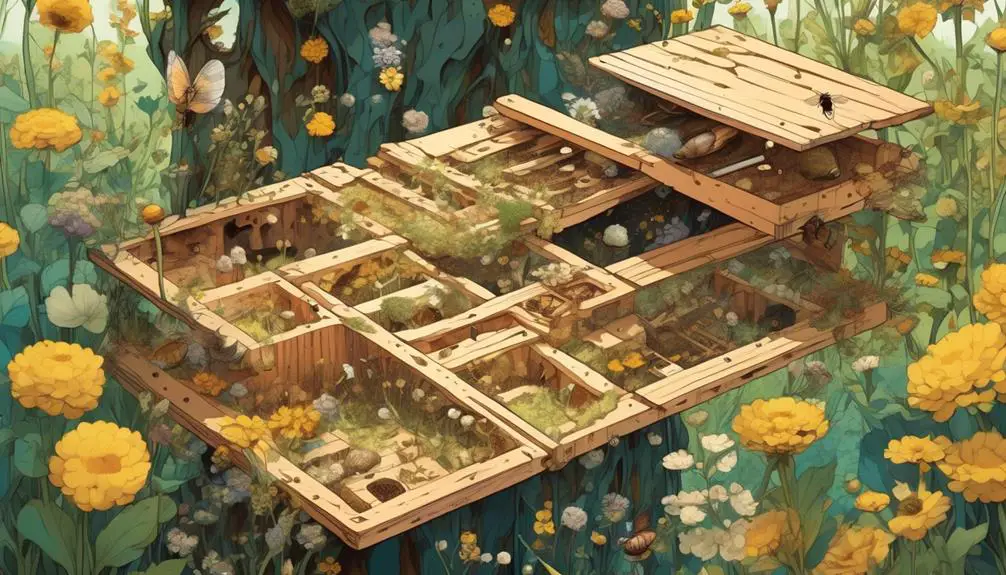
To fully grasp the intricacies of a Mason bee's life, you've got to delve into the specifics of their unique habitats, particularly their nesting preferences which involve holes of a certain depth.
These small, non-aggressive bees are native to North America and Europe, and they're known for their solitary nature and impeccable pollinating skills.
Mason bees prefer nesting in pre-existing holes with a depth of 4-8 inches. They're not burrowers, so don't expect them to dig out their own nests. They're more likely to set up home in your garden if you provide a ready-made bee house.
The depth of these holes is crucial because it allows them to create separate cells for each of their eggs. The depth also protects the larvae from predators and harsh weather conditions.
The female bee starts laying eggs at the back of the hole, working her way forward, filling the hole with pollen and nectar for each egg, then sealing it with mud.
Understanding this intricate process can help you create ideal habitats for these effective pollinators, contributing to an ecologically balanced garden.
Importance of Hole Depth in Bee Houses
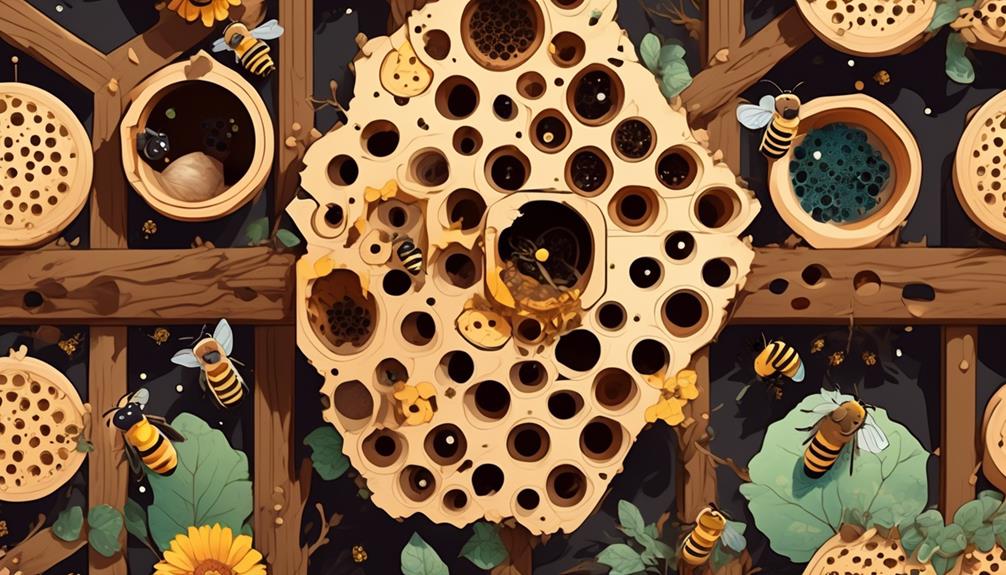
Given the critical role hole depth plays in the nesting habits of Mason bees, it's essential to grasp its importance when designing bee houses for your garden. Mason bees are solitary creatures, and each female constructs her own nest. The depth of the holes in these nests directly affects the sex ratio of the offspring, which can impact the overall bee population.
In nature, Mason bees prefer holes that are about 6 to 8 inches deep. When the holes are too shallow, fewer female eggs are laid, as they tend to be placed at the back of the hole. A skewed sex ratio can result, with more males than females.
On the contrary, if the holes are excessively deep, this can lead to wasted space, as the bees won't use the extra depth. This can lead to less efficient use of available nesting sites and potentially lower bee populations.
Therefore, it's critical that bee houses replicate the bees' natural preferences as closely as possible. This not only ensures a balanced sex ratio but also maximizes the use of available space, leading to a more thriving bee population.
Optimal Depth for Mason Bee Holes

Striking the right balance, you'll typically find that a depth of 6 to 8 inches is optimal for Mason bee house holes. This depth promotes adequate shelter and breeding conditions, allowing for the necessary space for larvae to develop.
However, it's not just about depth. Diameter plays a crucial role too. The ideal diameter for Mason bee holes is 5/16 of an inch.
Why this specific depth and diameter? Well, it's all about encouraging the right conditions for bee reproduction. Mason bees lay eggs in a linear fashion, from the back of the hole to the front. The female bee starts by placing a single egg, followed by pollen and nectar, and finally seals the chamber with mud. This process is repeated until the hole is filled.
Factors Influencing Hole Depth
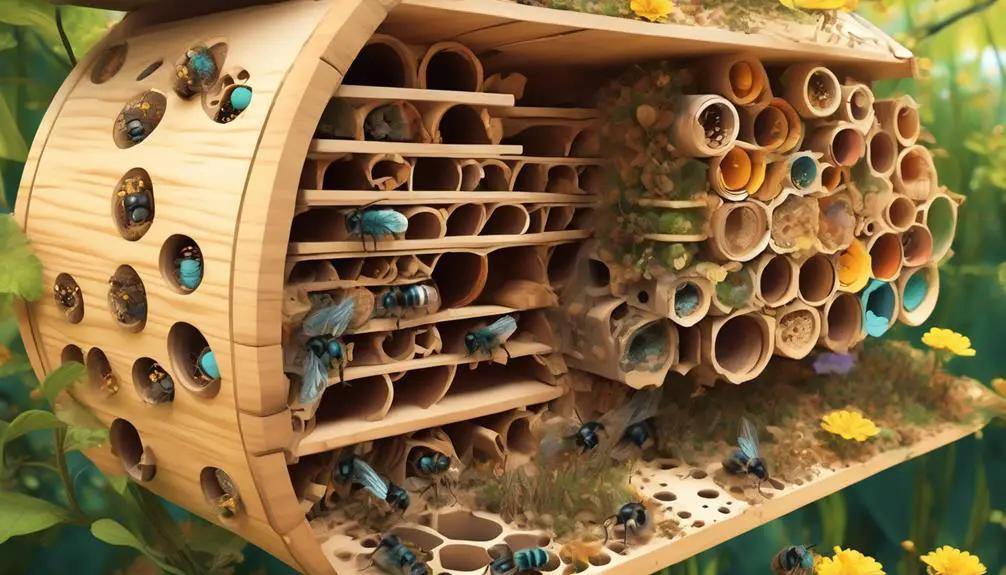
What factors might affect the ideal depth of Mason bee house holes, you ask? Several elements come into play here, and it's important to consider each one carefully.
First, the species of the bee itself is a key determinant. Different species have different lengths, and the hole depth must match the bee's size for it to comfortably lay eggs.
Second, local weather conditions also affect the ideal hole depth. In colder climates, deeper holes provide better insulation, protecting the larvae from freezing temperatures. Conversely, in warmer climates, shallower holes are more beneficial as they prevent overheating.
Third, the type of material used to construct the bee house influences the depth of the holes. Harder materials like wood mightn't allow for very deep holes, while softer materials like bamboo can facilitate deeper holes.
Lastly, the prevailing predator threat in your area can dictate hole depth. Deeper holes make it harder for predators to reach the larvae, offering enhanced protection. However, if predator threat is low, shallower holes are fine.
Tips for Creating Mason Bee Houses
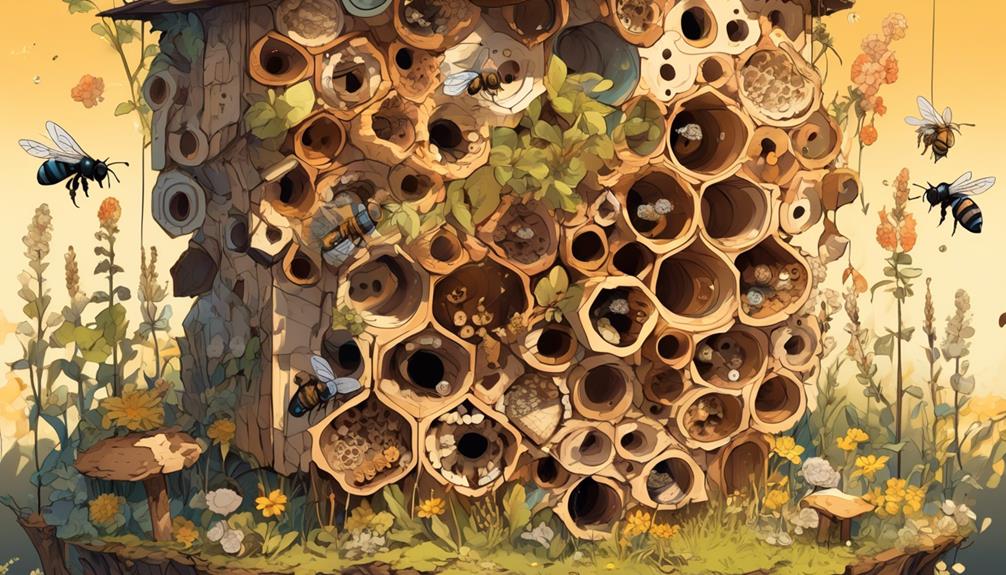
If you're planning to create a Mason bee house, it's essential to consider the type of material, hole depth, local climate, and predator threats to ensure a safe and comfortable habitat for these beneficial pollinators.
Untreated wood or bamboo is ideal, as these materials mimic the bees' natural nesting sites.
The hole depth is crucial. Too shallow, and the bees may only produce male offspring. Aim for a depth of 6-8 inches, which encourages a balanced sex ratio. Drill holes with a diameter of 5/16 inches, which is the preferred size for Mason bees.
Consider the local climate. Position the house where it'll receive morning sun, helping the bees warm up after a cool night. It should also be protected from harsh weather conditions, such as wind and rain.
Lastly, protect your bee house from predators. Birds, wasps, and certain insects can threaten the bees. Position the house at least 5 feet off the ground and consider adding a predator guard, like a tube or a wire mesh, at the entrance of the holes.
Follow these tips, and you'll create a bee house that's not just a haven for Mason bees, but also a boost to your local ecosystem.
Conclusion
So, you've learned how crucial hole depth is for mason bee houses. Ideally, they're 6-8 inches deep, providing adequate space for larvae to develop.
Sure, factors like bee species and material thickness matter, but don't overthink it. Instead, focus on creating a safe, comfy home for these beneficial insects.
Remember, a thriving mason bee population is good for us all. Now, go ahead and build that bee house. Your garden will thank you!

